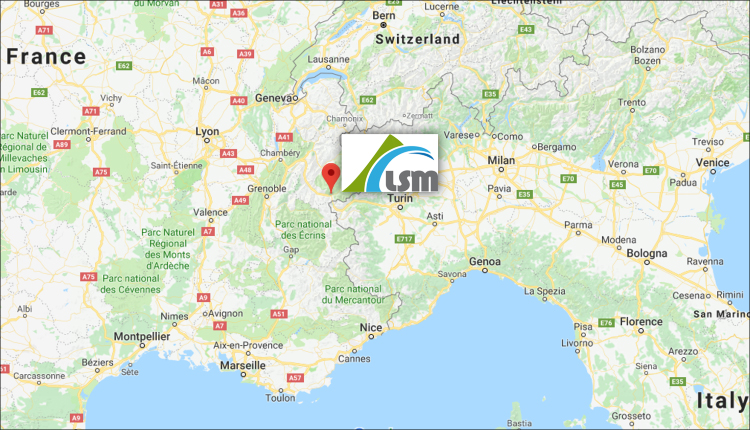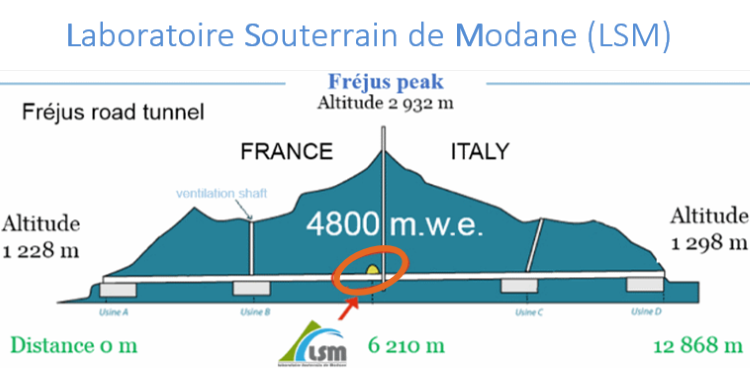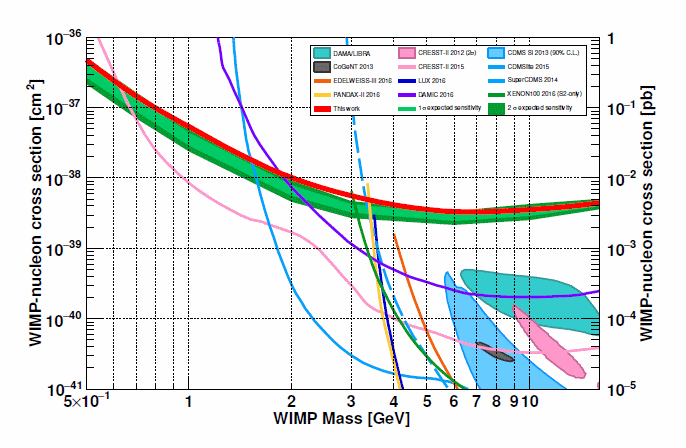
A 60 cm diameter SPC prototype made of high purity copper has been set-up at the Laboratoire Souterrain de Modane (LSM) by the IRFU and LSM teams. Initially intended to measure neutron energy spectra, the success of this experiment prompted it to be re-dedicated to search for low mass dark matter. Our recently published first results have already established a new world-leading constraint on the WIMP elastic scattering cross section for a WIMP mass of 0.5 GeV.


The NEWS-G collaboration operates a direct dark matter search experiment at the Laboratoire Souterrain de Modane (LSM). Despite being above sea level, this underground laboratory (located in the Frejus tunnel between France and Italy) is the deepest in Europe. The facility benefits from a 4800 m.w.e (meters of water equivalent) natural protection against cosmic particles, reducing the muon flux from a few 106/m2/day down to ~4/m2/day.
In order to further protect the detector from external radiation, it is enclosed in a compact shielding made of 30 cm of polyethylene, 15 cm of lead and 8 cm of copper. The detector itself is a 60 cm diameter Spherical Proportional Counter (SPC) made of ultra-pure (NOSV) copper. This prototype called SEDINE (SphErical DetectIon of NEutrons) was initially designed for low flux neutron measurements. However, it has many appealing features for hunting for light dark matter, including sub-keV energy detection thresholds, low A target nuclei, and pulse shape discrimination of surface events. Because of this, it was re-dedicated to search for low-mass WIMPs.

First results from NEWS-G at the LSM
NEWS-G recently published its first results on the search of low-mass WIMPs with SEDINE. The detector was operated with a Ne/CH4 (99.3%/0.7%) mixture at 3.1 bars in sealed mode during 42.7 days for a total exposure corrected for dead times of 9.6 kg.days. A 6.3 mm in diameter silicon sensor was used and set at 2520 V via an insulated high voltage wire going through a copper rod at ground. The resulting amplification gain allowed to set the trigger threshold at ~35 eVee, providing a 100% trigger efficiency above the analysis threshold of 150eVee.
A multivariate analysis of the physics-run was performed using a Boosted Decision Tree (BDT), a machine learning algorithm trained with simulated signal events and background events to identify the set of cuts in rise time and energy that would optimize the sensitivity of the experiment to different WIMP masses. Conservatively considering all events remaining after cuts as WIMP candidates, an upper limit at 90% C.L was set on the SI WIMP-nucleon scattering cross section using Poisson statistics (solid red line in the Figure below). This established new leading constraints for WIMP masses lower than 0.6 GeV, and makes NEWS-G one of only two experiments in the world capable of detecting sub-GeV WIMPs.

 Queen's Physics Department
Queen's Physics Department